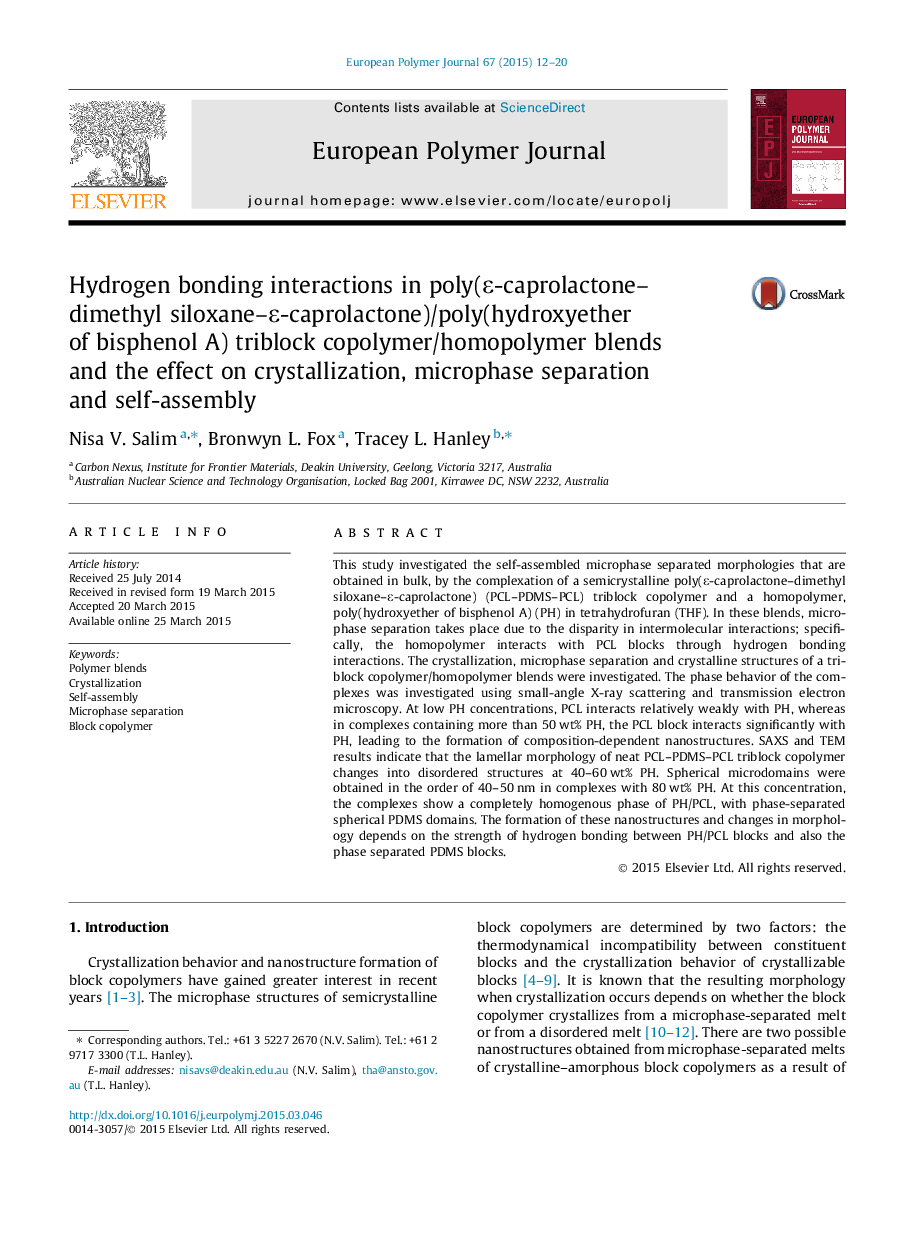| کد مقاله | کد نشریه | سال انتشار | مقاله انگلیسی | نسخه تمام متن |
|---|---|---|---|---|
| 1400431 | 1501368 | 2015 | 9 صفحه PDF | دانلود رایگان |

• Complexation of a semicrystalline triblock copolymer and a homopolymer is studied.
• The microphase separation is driven by hydrogen bonding.
• Characterization of the crystallization kinetics of the blend components.
This study investigated the self-assembled microphase separated morphologies that are obtained in bulk, by the complexation of a semicrystalline poly(ε-caprolactone–dimethyl siloxane–ε-caprolactone) (PCL–PDMS–PCL) triblock copolymer and a homopolymer, poly(hydroxyether of bisphenol A) (PH) in tetrahydrofuran (THF). In these blends, microphase separation takes place due to the disparity in intermolecular interactions; specifically, the homopolymer interacts with PCL blocks through hydrogen bonding interactions. The crystallization, microphase separation and crystalline structures of a triblock copolymer/homopolymer blends were investigated. The phase behavior of the complexes was investigated using small-angle X-ray scattering and transmission electron microscopy. At low PH concentrations, PCL interacts relatively weakly with PH, whereas in complexes containing more than 50 wt% PH, the PCL block interacts significantly with PH, leading to the formation of composition-dependent nanostructures. SAXS and TEM results indicate that the lamellar morphology of neat PCL–PDMS–PCL triblock copolymer changes into disordered structures at 40–60 wt% PH. Spherical microdomains were obtained in the order of 40–50 nm in complexes with 80 wt% PH. At this concentration, the complexes show a completely homogenous phase of PH/PCL, with phase-separated spherical PDMS domains. The formation of these nanostructures and changes in morphology depends on the strength of hydrogen bonding between PH/PCL blocks and also the phase separated PDMS blocks.
Figure optionsDownload as PowerPoint slide
Journal: European Polymer Journal - Volume 67, June 2015, Pages 12–20